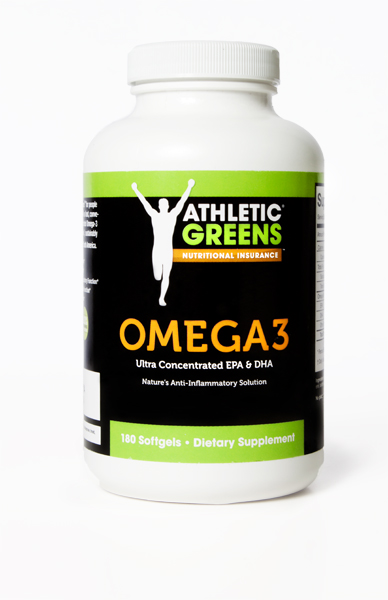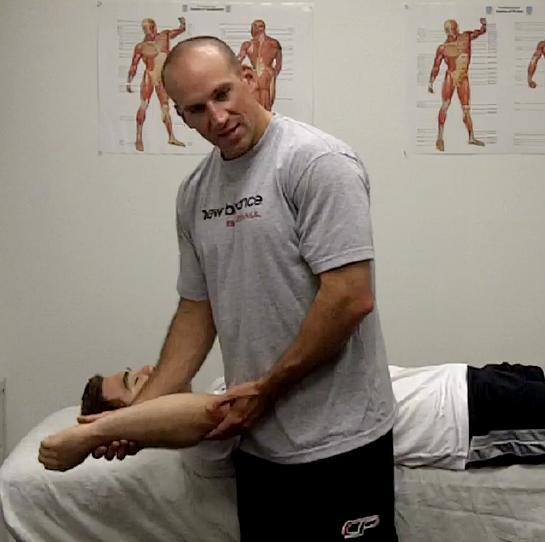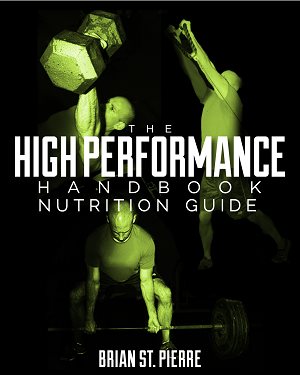Filed under: General Health, Nutrition
I recently did an interview with Danny McLarty which covers a lot of topics that I get questions on everyday, so be sure to check it out!
Interview with Brian St. Pierre
In addition a former client of mine sent me a link to this video of the Today Show, where they had tested a bunch of home water filtration systems to see which ones were the most effective. Definitely interesting stuff and further proof that it is in your best interests to filter your drinking water, whether public or private.
Filed under: General Health
While my main area of focus is nutrition, and to a slightly lesser extent training, I do like to think of myself as having a broad scope of knowledge in many areas that affect our health, and certainly a passionate interest. I wrote a piece a while back called The Dangers & Solutions of Indoor Air Pollution, which is one of my favorites as I feel it highlights some relatively unknown areas of our lives that could be significantly impacting our health, as well as what to do about it.

Well in that same vein some recent research caught my attention. Dr. Anne Steinemann and colleagues at the University of Washington ran tests of scented laundry detergent and dryer sheets and then measured the gases being emitted from the dryer vent for possible carcinogens and health hazards. What they found may surprise you.
The first set of laundry that they ran used no products at all. The next used a leading brand of scented laundry detergent, but no dyer sheets in the dryer. The final test got both the detergent and the dryer sheets.
What the researchers found was 25 volatile organic compounds (VOCs), which are chemicals that can cause long-term health effects. In addition the EPA classifies seven of these particular VOCs as hazardous air pollutants, and two of them as carcinogens with no safe level of exposure (acetaldehyde and benzene). Even when there weren’t any products in use the vents gave off some VOCs, probably due to the fact that theses were machines in people’s houses and there was some residual matter from previous laundry cycles. When the laundry detergent was added it was much worse, adding 10 new VOCs. When both the scented laundry detergent and the scented dryer sheets were used created by far the worst situation, emitting acetaldehyde, acetone, benzaldehyde, hexanol and many many more hazardous chemicals. Even worse the carcinogenic acetaldehyde was among those with the highest concentrations.
The researchers estimate that emissions from dryer vents to equal about 6 percent of the emissions of carcinogenic acetaldehyde from automobiles. While seemingly small, it is also a much more direct exposure, especially if you are venting into your basement or garage. Unfortunately you won’t find these compounds on the ingredients list. The word “fragrance” as a single ingredient can actually contain up to 200 chemicals! It is also proprietary information, does not need to be listed and is not regulated.

While getting into a discussion on the fact that the emissions from our dryers is a totally unregulated problem is beyond the scope of this blog, the bottom line is your best bet would be to use an unscented, hypoallergenic “natural” laundry detergent, I like Seventh Generation Free & Clear personally, along with an unscented and fragrance free dryer sheet. No your clothes may not have that April fresh scent, but at least they will be far less likely to pose any health risk. Certainly seems like a worthy trade-off to me.
Filed under: General Health, Nutrition, Recipes
Kefir seems to be the popular new kid on the block in the nutrition world. I have received several emails from readers asking my thoughts on it, and several big-name types in the fitness industry have featured it lately. For those who are unaware kefir is a fermented milk product made with a kefir grains. Think of it essentially as an effervescent liquid yogurt. Just like yogurt it is loaded with beneficial probiotics, bacteria that line your digestive tract (mainly your colon) and confer a plethora of health benefits to you.
Just like plain yogurt plain kefir is a little sour, however that can be easily remedied with a little protein powder and fruit in a deliciously healthy smoothie. In fact I think this is one of the best ways to consume kefir if you choose to do so. I generally don’t recommend sweetened versions as their sugar content is too high. I prefer to add flavor myself.
A big brand-name brand that also gets excellent scores (4 out of 5) from the Cornucopia Institute is Lifeway. They produce an organic whole milk kefir that I think is absolutely top-notch. The nutrition facts are more or less equivalent to regular whole milk though the protein is a teeny bit higher because of the addition of some non-fat milk in the second fermention process.

You can replace the unsweetened vanilla almond milk in any of my smoothie recipes with 1 cup of this kefir if you so desire, though do be aware it will increase the calorie content. In fact I think this recipe works the best:
- 8oz organic while milk plain kefir
- 1 scoop Jay Robb vanilla protein (though strawberry or tropical dreamsicle also work)
- 1/2 cup wild frozen or fresh blueberries
- 1/2 cup frozen or fresh organic raspberries or strawberries
- 1 tbsp milled flax seed
- 2 tbsp chopped walnuts
- ice cubes if using fresh fruit
This will provide 39g of protein, 33g of carbs, 10g of fiber, 20g of fat and 468kcal.
While there are a lot of claims about kefir and its abilities to improve heath, don’t be sold on it being a miracle food. It is simply another healthy addition to your intake and your digestive tract will thank you for its consumption due to its abundance of probiotic bacteria, many of which are different than those in yogurt, which could provide a nice complement to your yogurt consumption.
Filed under: General Health
Alan Aragon’s Research Review is absolutely fantastic stuff. If you are a fitness professional and you do not subscribe you are doing yourself a serious disservice. I know it can be a challenge to keep up on the research yourself, so why not let someone as bright as Alan take care of some of that for you? He breaks down research articles, provides his own review articles on relevant topics (like nutrient timing, saturated fat, grains & inflammation, etc) and delivers a top-notch product every month.
Anyway, his November 2011 issue contained a question from a reader who stated that his doctor was concerned about his cholesterol levels being high and was considering putting him on a statin. This reader stated how he follows Alan’s recommendations and hopes its not the three eggs per day and whole fat milk that is giving him such “high” cholesterol. The quotations are mine and you will see why in a moment.
Well Alan proceeded to ask this reader what his actual numbers were, and here is what he got (I have slightly rounded, by just a few points, to avoid any HIPAA issues):
HDL: 110 mg/dL
LDL: 105 mg/dL
Triglycerides: 25 mgdL
Does anybody see what is wrong with this picture? His doc is concerned because his total cholesterol is elevated, but this is simply because his HDL (considered good cholesterol) is through the roof! A level above 60 is desirable, and he is far above that, which significantly reduces his risk of cardiovascular disease.

In addition Alan astutely points out that the ratio of total cholesterol to HDL is a better predictor of heart disease risk than total cholesterol or LDL cholesterol (often called bad cholesterol, though that is somewhat misleading) alone. In men a ratio of 5 is average risk, while a ratio of 3.4 cuts your risk in half. This guy’s ratio is 2!
Alan also points out that a recent study stated that the triglyceride to HDL ratio is the “single most powerful predictor of extensive coronary heart disease among all the lipid variables examined.” It was found to be even more powerful than the aforementioned TC/HDL. The goal of the triglyceride to HDL ratio is 2 or lower. The reader’s score was 0.2!
As you can clearly see this guy’s doctor is missing the forest for the trees. Where he only sees high total cholesterol, the numbers actually show that this guy has an excellent cholesterol panel (from what these numbers show us anyway) and absolutely, positively does not need a statin.
For a more detailed breakdown of this scenario, and just for consistently good breakdown of current and past research, do yourself a favor and subscribe to Alan’s Research Review, you will be glad you did.
Clearly 3 whole eggs and whole milk were not a problem for this guy! The point of all of this was to encourage you to educate yourself prior to seeing your doctor. Doctor’s are smart people, but that doesn’t mean they know everything. It is ok to gather data and be an informed patient. In fact I think it is imperative because if you are not an advocate for yourself, who will be?
Filed under: General Health, Nutrition
For years now I have recommended Carlson’s The Very Finest Fish Oil as my fish oil supplement of choice. It is a product that has passed a plethora of third party testing for purity and potency, tastes good and is a reasonable price. Many times on this very website I have sung it’s praises, however a new product has arrived that has displaced Carlson’s as my top fish oil recommendation, but we will get to that in a second.
There is another fish oil product that I have never mentioned on this site that is spectacular, but you certainly pay the price for it. Nordic Naturals Ultimate Omega is the market leader when it comes to fish oil, however it costs $20/month compared to Carlson’s $10. In terms of absolute quality this product has stood head and shoulders above the rest.
That has all changed.

Athletic Greens has recently launched their own fish oil, Athletic Greens Omega 3, where their sole aim was to match or exceed Nordic Naturals in all categories, and yet be affordable for the average consumer, and they did so with flying colors!
While much has been made of their Athletic Greens multivitamin/mineral/greens supplement, and I do think it is a good product, I personally still prefer Innate Response One Daily (Men’s and Women’s) due to its vitamin and mineral content actually being derived from food, no synthetics whatsoever. However, this fish oil product is absolutely fantastic and it just blew me away.
It is made from small, wild, sustainably-caught fish, is third-party tested for contaminants, is ultra-concentrated (you only need 2 capsules), has no fishy after-taste and it too will only cost you $10/month!
As a matter of fact I was surprised to see that Carlson’s does not source from wild, sustainably-caught fish. I guess I had just always assumed this was the case. From now on my default fish oil recommendation is going to be Athletic Greens Omega 3. Check it out for yourself and let me know what you think.
Filed under: General Health, Nutrition
The other day during a phone consult with an online client it was mentioned to me that the previous nutritionist this client had worked with (a “diabetes specialist” as this client is pre-diabetic) had recommended the strict avoidance of all orange produce. Yes you read that right, orange produce.
Seriously.

Orange produce – carrots, pumpkin, sweet potatoes, oranges, etc – were all on the Not To Be Eaten list. The rationale was that they are digested too quickly and therefore will exacerbate the pre-diabetes issue. This is such a misunderstanding of the science it is utterly scary.
So this “expert in diabetes” is telling me that if I am pre-diabetic that eating a serving of baby carrots (which we will say is 10 of them, close enough anyway) is going to harm my pancreas/increase my insulin resistance? Does this make any semblance of sense? Do you see the ridiculous of this assertion? I understand carrots have a relatively high GI for a vegetable, but that test requires 50 grams of digestible carbohydrate. That takes 1.5lbs of carrots! No one eats that in a sitting and it is utterly irrelevant to every day intake.
This type of advice is nutritionism at it’s worst. It’s just like telling someone to not eat eggs because they contain cholesterol. Focusing on one aspect of a food to the exclusion of all others is just asinine, and is missing the forest for the trees. Carrots are a lot more than their GI value, just like eggs are a lot more than their cholesterol content.

Do you judge an engagement ring simply on cut? No! You look at size, color, clarity, price, etc. Odd analogy I know, it just popped into my head and I think it works nicely.
The point is that whether or not you eat carrots or sweet potatoes is not in anyway going to affect your diabetes risk. Losing weight, quitting smoking, exercising more, decreasing stress, getting adequate sleep, and eating a nutrient-rich calorically balanced diet are your best weapons against most diseases, including diabetes. Avoiding orange produce is not.
Filed under: General Health, Nutrition
I recently received this question from a reader and I thought the answer was worth sharing with all of you.
Q. Brian,
I wanted to get your expert take on fish oil vs. krill. Which is better in your opinion? I’ve been on the fish oil bandwagon for years . Which is the better of the 2?
Thanks as always for your blog and the great info. It’s appreciated!

A. I think this is a good question, however I am not sure there is a clear cut answer.
In my opinion both are good, but in comparison to fish oil there isn’t nearly as much data on krill oil. The data that is coming out is quite positive, however much of it has been supported by Neptune Technologies, the company that owns the patent on the process of removing the oil from the krill.
Now that isn’t to say the research is invalid, it simply means I would like to see more independently conducted research before I draw any conclusions. Now having said that, people still want answers, and my answer is this:
For now I still recommend fish oil (I like 1 tsp of Carlson’s The Very Finest Fish Oil for most people). It has mountains of data supporting its efficacy in a plethora of capacities. It is cost-effective. And finally, it has been around long enough to have been found to work in real life, not just the lab.

Krill oil is an incredibly promising supplement that may one day supplant fish oil. With it’s phospholipid form of omega-3′s (rather than fish oil’s triglyceride form), astaxanthin (a powerful antioxidant), phosphatidylcholine (a potent source of choline, which I have written more about here), as well as some fat-soluble vitamins it certainly appears to be a wonderful thing. However, in comparison to fish oil it is not cheap. Yes you can allegedly take less to get the same result, but not enough to make up the cost difference.
For now with fish oil’s far longer track record it is my go source for marine lipids, but I am certainly keeping krill oil on my radar. If you choose to take krill oil that is certainly fine, just be willing to pony up a few (up to 5x more) extra bucks!
Filed under: General Health, Training
Something I found interesting was on Tony Gentilcore’s site he asked his readers what they wanted to see more of in 2012, and one of the most common responses was the Stuff You Should Read posts. Now to be honest people such as myself, Eric, Tony and the like have always liked the posts to branch out and connect our readers with other quality writers, but we always wondered if our readers actually like them.
I guess the answer is yes. So with that in mind here is my Stuff You Should Read for today.
Stuff to Read While You’re Pretending to Work: 1/5/12 – by Tony Gentilcore. Thought I would start this off right by giving you guys a link to a bunch of great articles that Tony linked to! Topics include chicks getting good at pullups (works for guys too), a rant against calories, being awesome and the like. Good stuff as usual.
What Causes Insulin Resistance Part IV - by Stephan Guyenet. As usual Stephan provides riveting yet easy-to-read information on the causes of insulin resistance. For those of you not well-versed in science this is probably one of his easiest to understand posts as it’s not too technical.
The 80/20 Principle for Program Design – by Dean Somerset. Dean is a guy who’s stuff I have been meaning to read and just haven’t done enough of it yet. Well I made a decision to read this post and I am glad I did. Simple, to the point and easy to apply. It is quite long though!
Enjoy!
Filed under: General Health, Training
I had the fortune of wrapping up my Dietetic Internship on Tuesday of this week, which was definitely a very nice feeling. I certainly learned a ton, especially about nutrition in the Critical Care setting. Tube feeds and IV feeds (whether central or peripheral access) with different conditions and elements involved was intellectually challenging, and some of the doctors were very willing to teach the physiology of things like SIRS & ARDS. It was an enlightening experience to say the least. While I continue to believe that our management of chronic conditions is seriously lacking, our doctors are incredibly well-trained in the acute care setting (which some might argue is part of the problem, because we treat chronic conditions like acute ones!).
In other news I went down to Cressey Performance for the day yesterday, which was a most welcome change of pace. I even gave the staff in-service in the morning before clients arrived, which was aimed mainly at teaching the 6 new interns the basics of working with high school athletes. We also had a Q & A after where Eric, Tony, Chris and others asked questions on different topics. It was more of an impromptu off-the-cuff talk than anything formally prepared, but I think it went really well. We recorded the talk, so I will keep you updated if we do anything with it.

Continuing the CP theme it was good to get back in the trenches and coach people again. Though there are a lot of new faces and plenty of new exercises that I had to ask a few questions on, the coaching aspect was like riding a bike. Coaching trap bar deadlifts, med ball work, core exercises, and my favorite for newbies – Glute Ham Raises was an absolute blast and I hope to do it again sometime soon. It was great to catch up with everybody and marvel at the speed at which Cressey Performance continues to grow.
I also had EC eval me as my left shoulder/trap/upper back area has been cranky as of late and not responding as I would have liked to some of my attempts at treating it. While it has gotten better, it wasn’t great, so I had Eric check me out. He basically concluded that I have downward rotation syndrome and jacked up levator scapulae, essentially my upper traps have been too neglected and I need to work on overhead shrugs and a few other similar exercises.
As we talked he mentioned that he has started to notice this issue more and more with guys when he assesses them, due to a seemingly over-emphasis on the “down-and-back” cue, near total avoidance of using the upper traps in addition to poor upper body posture (mainly anterior scapular tilt and excessive internal rotation – mostly from sitting too much). Looking back I can definitely see how I have not trained by upper traps/uppward rotators to the same degree as my downward rotators, not too mention the fact that I have been sitting a ton more since I left CP. We also both felt there was accumulated wear and tear on the area from years of baseball/lacrosse/hockey/rugby that certainly isn’t doing me any favors, but with some appropriate soft tissue work and corrective strategies I should be good to go.

This really speaks to the fact that the hardest person to train is yourself. As much as I know about appropriate training modalities, proper exercise execution, and corrective strategies, when training yourself it can be easy to continue to work on what you are good at and neglect areas that are weak. Doing a little more research myself I stumbled across a fantastic article by Mike Robertson and Bill Hartman that outlines the downward rotation syndrome and provides some excellent corrective strategies that I will certainly put to use – Push Ups, Face Pull, and Shrugs.
Lastly, I also wanted to mention to keep your eyes peeled for some audio interviews I did for Rick Kaselj of ExercisesForInjuries.com and Medhi of Stronglifts.com recently. They should be going up within the next month or so, and I will let you guys know when they do.
Filed under: General Health, Nutrition
A reader recently sent me a question that I thought many people may have, so I decided to provide my answer for everyone to see.
Q. Hi Brian,
I’ve been meaning to shoot you an email to thank you for a while. I purchased your nutrition information from Eric Cressey’s Show and Go product. It’s some of the most well thought out and realistic nutrition information I’ve ever read. I think you have a real knack for simplifying what others can make very complicated but at the same time educating and providing people with important reasons why their nutrition matters so much.
I wanted to ask you was in your guidelines I know you refute the commonly held belief that saturated fat is bad. In your shopping list though is lean meats. Is that just in case the meat is conventional and there are more antibiotics or hormones stored in the fat?

A. First off, thank you for the kind words, much appreciated. I like to think of that as my skill set as well!
The reason for relatively lean meats is because excess fat and calories is still excess fat and calories. While I don’t think saturated fat is the devil, far from it, the goal isn’t to eat as much of it as possible either! Eating lean meats allows you to decide what fat sources you want with that meal. Do you want olive oil, butter, avocado, nuts, or maybe you want fattier meat? In addition it’s not like I am recommending 99% lean ground meat either (which tastes awful), I think 93% is a good compromise. Eating fattier meat will decrease the protein content and make it harder to hit your macronutrient needs within your caloric needs. Granted, if you know how to fit it in then go for it.
For example lets say you want to make a burger – going with say an 85% lean patty makes it more difficult to add other things to it if you like cheese or avocado with your burger, or you wanted to saute up some veggies in olive oil or something like that. Going with 93% allows for more flexibility without sacrificing much in taste.

Again just general recommendations. If you know what you are doing you can easily consume a higher fat steak, just have something like a sweet potato and some steamed veggies with it. With the lower fat options you just more flexibility to add other components and not be jacking up the calories crazy high. Choosing a higher fat cut of meat is not inherently bad, it just tends to limit your side options is all.
Your point at the end about the hormones and antibiotics is a valid question as well, and if you are choosing conventional meat it might be a wiser idea to go with a leaner option.
Make sense?
I would love to hear your thoughts and comments below.

















Posted on February 20th, 2012 by Brian St. Pierre
No Comments »